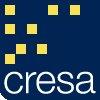Most tenants, when searching for a home for their business, have a certain set of criteria in mind. Usually the criteria are a mixed bag of the following: location, access, visibility, functionality, and cost. Ultimately it will be up to the tenant to decide which factors have the highest priority during the decision making process. However, consider the following questions when starting the process:
1) Location
- How long is the commute for employees and guests?
- Who and what other businesses are in the area?
- What are the amenities that are nearby?
- Is the location geographically desirable?
- How will this location affect the overall value of my real estate?
2) Access
- How far from an interstate or major road?
- How many turns, stoplights, or stop signs must someone trying to find the space travel through?
- If in a redeveloping area or new construction, how much will construction of roads and other buildings affect the ability for employees and customers to get to the space?
3) Visibility
- What signage opportunities are available on the front/back/side of the building?
- Does the building stand out from the surrounding environment?
- Do characteristics of the building make it visibly appealing and draw people’s attention?
- Is signage on the roads/entrances to the building easily visible to help instruct people to get to where they want to go?
4) Functionality
- How closely do the existing conditions of the space reflect what you ultimately want the space to be – this can greatly affect construction and lease rate costs
- Is the building intended for office/warehouse/retail use?
- Is the building properly zoned for your intended use – if not, is it possible to change?
- How well does the building/space accommodate any future growth plans for the business?
Once you have your location priorities set, use these tips for cost considerations:
- Be careful about landlords front-loading lease contracts with free rent, cheaper rental rates, to incentivize tenants to move
- Focus should be on the overall average net rental rate for the entire duration of the term, and how closely that rate fits into current market conditions
- Avoid entering into contracts that the landlord requires more than a 3% annual rental rate increase
- Clarify which party is responsible for paying for common area maintenance (CAM), real estate taxes, and insurance for the building. Understand current estimates of these costs prior to entering into a lease contract
- Clarify whether or not costs for construction of improvements are being paid by tenant through rental rate, or paid separately by landlord
- Parking costs, if any, should be clarified in a lease document
Whether you are expanding, consolidating, relocating, or staying put, you need someone with the expertise to guide you through the complexities that accompany any real estate transaction. A company like Cresa can take charge of everything from the initial needs assessment through the closeout.



